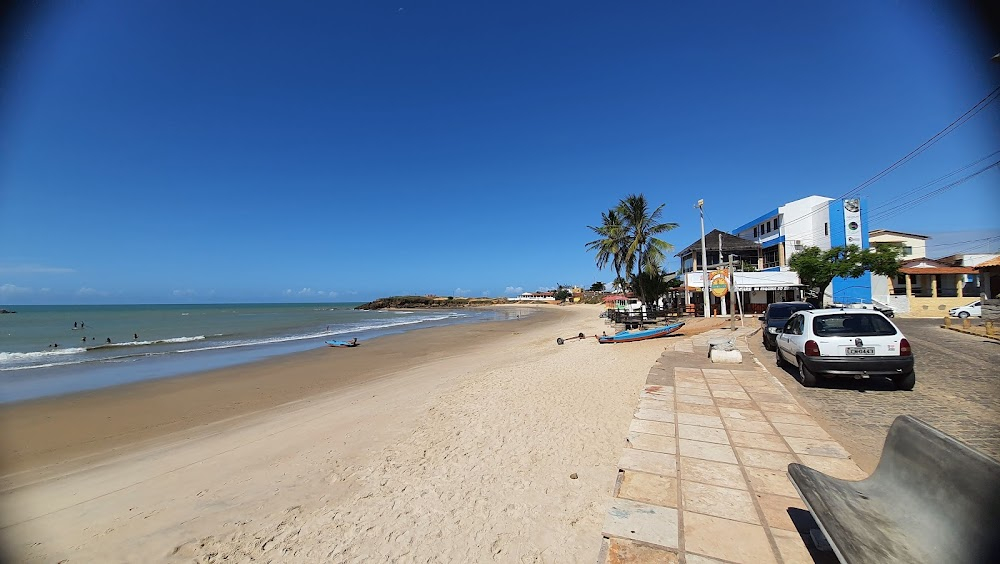Os Hermanos Perdidos no Brasil Filming Locations

Where was Os Hermanos Perdidos no Brasil filmed? Os Hermanos Perdidos no Brasil was filmed in 19 locations across Brazil in the following places:
Os Hermanos Perdidos no Brasil Filming Locations
Brazil, officially the Federative Republic of Brazil, is the largest and easternmost country in South America and Latin America. Brazil is the world's fifth-largest country by area and the seventh most populous. Its capital is Brasília, and its most populous city is São Paulo.
Foz do Iguaçu, a city in the Brazilian state of Paraná, is the main base for visiting famed Iguaçu Falls, one of the world's largest waterfalls. Stretching for 2.7km, and straddling the border with Argentina, the falls comprise hundreds of cascades, including the 80m-tall Devil’s Throat. Drenching rides on rubber boats are a popular way to take in the thundering spectacle.
Londrina is a city in southern Brazil. It’s known for the vast Lake Igapó, a group of 4 connected man-made lakes fringed with bike paths and green space. The Londrina Museum of Art is housed in the old bus station, a modernist landmark, and features a Rodin sculpture. The Botanical Garden of Londrina has rare and endangered plant species. Calçadão de Londrina is a promenade with restaurants and shops.
Brotas is a Brazilian municipality located in the state of São Paulo. The population is 24,636 in an area of 1101 km². The town is known locally for its coffee, on which its economy relies.
São Paulo, Brazil’s vibrant financial center, is among the world's most populous cities, with numerous cultural institutions and a rich architectural tradition. Its iconic buildings range from its neo-Gothic cathedral and the 1929 Martinelli skyscraper to modernist architect Oscar Niemeyer’s curvy Edifício Copan. The colonial-style Pátio do Colégio church marks where Jesuit priests founded the city in 1554.
Santo André is a Brazilian municipality located in the Metropolitan Region of São Paulo. It is part of a group of municipalities known as the ABC Region. According to the most recent census in 2022, the population is estimated at 748,919 in an area of 175.8 km². or about 43,441 Acres of landmass.
Santos, a coastal city in southern Brazil's São Paulo state, is a major seaport stretching from the mainland to São Vicente Island. The island's urban center borders the Bay of Santos, known for its wide beach and adjacent 5.3km-long garden. The Museu do Café, occupying a 1922 commodities exchange preserved in the historic district, explores the area's key role in Brazil's coffee trade.
Rio de Janeiro is a huge seaside city in Brazil, famed for its Copacabana and Ipanema beaches, 38m Christ the Redeemer statue atop Mount Corcovado and for Sugarloaf Mountain, a granite peak with cable cars to its summit. The city is also known for its sprawling favelas (shanty towns). Its raucous Carnaval festival, featuring parade floats, flamboyant costumes and samba dancers, is considered the world’s largest.
Mariana is a city in eastern Brazil known for its baroque colonial architecture. Near Praça Gomes Freire, a leafy square with a pond and a gazebo, the Cathedral of Our Lady of the Assumption houses an 18th-century German organ. Close by, the Shrine of Our Lady of Mount Carmel has a rococo-style altar. The Church of St. Francis of Assisi features 18th-century Bohemian-crystal chandeliers.
Porto Seguro is a coastal resort town in the Brazilian state of Bahia. It’s home to roughly 90 kilometers of tropical beaches, including the popular Praia de Taperapuãn. The city is also known for its vibrant nightlife scene, which centers on the bar-lined promenade Passarela do Álcool. During Carnival season, flamboyantly costumed performers and parading samba musicians help form a massive street party.
Ilhéus is a major city located in the southern coastal region of Bahia, Brazil, 211 km south of Salvador, the state's capital. The city was founded in 1534 as Vila de São Jorge dos Ilhéus and is known as one of the most important tourism centers of the northeast of Brazil.
Salvador, the capital of Brazil’s northeastern state of Bahia, is known for its Portuguese colonial architecture, Afro-Brazilian culture and a tropical coastline. The Pelourinho neighborhood is its historic heart, with cobblestone alleys opening onto large squares, colorful buildings and baroque churches such as São Francisco, featuring gilt woodwork.
Recife is the state capital of Pernambuco, Brazil, on the northeastern Atlantic coast of South America. It is the largest urban area within both the North and the Northeast Region of Brazil.
Caruaru is a Brazilian municipality in the state of Pernambuco. The most populous city in the interior of the state, Caruaru is located in the microzone of Agreste and because of its cultural importance, it is nicknamed Capital do Agreste, Princesinha do Agreste, and Capital do Forró.
Natal is the capital city of the state of Rio Grande do Norte, on Brazil's northeastern tip. It's known for its extensive coastal sand dunes and star-shaped Forte dos Reis Magos, a 16th-century Portuguese fortress at the mouth of the Potengi River. North across the river, Genipabu is an area of towering dunes with a freshwater lagoon. The Via Costeira highway links a 15km stretch of beaches south of the fort.
Touros is a municipality in Rio Grande do Norte, Brazil. It is known as "Brazil's Corner" because it is located at the northeast corner of the country, being the closest South American city to Africa. Touros has many fish, and there is a nearby seawater basin in the ocean formed by banks of coral.
Os Hermanos Perdidos no Brasil (2013)
Put an Argentinean, a Paraguayan and a Uruguayan in a 1970's Volkswagen Van and give them a challenge: Cross Brazil in 30 days. The prize? It's a surprise.

